As part of the sustainable urban development trend in Ho Chi Minh City, the Saigon Binh An project in Thu Duc has emerged as a new symbol of modern living in harmony with the environment. Accompanying the project is Dai Nam Environmental Solutions Co., Ltd. – a company with extensive experience in wastewater treatment – with a mission to provide effective technical solutions that help protect the living environment. This collaboration not only enhances the value of the project but also reflects a strong commitment to creating a green, convenient, and long-lasting living space for the community.
1. Project Overview – The Global City Thu Duc - Saigon Binh An
-
Project Name: The Global City Thu Duc – Saigon Binh An
-
Capacity: 2,900 m³/day (Treatment Plant No. 2)
-
Investor: Masterise Homes Group
-
Project Address: Do Xuan Hop Street, An Phu Ward, Thu Duc City, HCMC
-
Contractor: Dai Nam Environmental Solutions Co., Ltd.
-
Contractor Address: 144 Chu Van An, Ward 26, Binh Thanh District, HCMC
Located in the heart of Thu Duc City – one of the fastest-growing and most dynamic areas of Ho Chi Minh City – the Saigon Binh An project is a premium urban development with a modern, well-planned layout. It is envisioned as a model residential area. With a prime location near major transport routes such as Hanoi Highway, Mai Chi Tho Boulevard, and Metro Line No. 1, the project is complemented by a diverse internal ecosystem of amenities including green parks, international schools, shopping centers, and a multipurpose sports complex.
The highlight of Saigon Binh An is its development model as a smart ecological urban area, where residents can live close to nature while enjoying modern comforts. With the involvement of Dai Nam Environmental Solutions in consulting and implementing the wastewater treatment system, the project clearly demonstrates its commitment to sustainability, environmental protection, and enhanced living standards for future residents.
2. Overview of the Wastewater Treatment System
2.1 Collection and Screening Tank (Pump sump – TK01)
Wastewater passes through a coarse screen (10–20mm) to remove large debris that could clog pumps or pipelines. Sand settles at the tank bottom and is pumped to a sand drying bed. Pre-treated water is pumped to the grease trap.
2.2 Grease Trap (TK02)
Water flows through a rotary drum fine screen (2mm) to remove smaller debris. As domestic wastewater often contains grease and oil, a three-compartment grease trap is used to separate them based on gravity. The lighter oil floats and is removed. The treated water flows by gravity to the equalization tank. Waste oil and debris are collected by licensed service providers.
2.3 Equalization Tank (TK03)
Designed to regulate flow rate and pollutant concentrations, ensuring consistent conditions for downstream treatment.
2.4 Anoxic Tank (TK04)
Here, denitrification occurs to release nitrogen gas. Nitrate-rich water is circulated from the biological tank, while activated sludge is also recirculated to maintain biomass levels.
2.5 Biological Tanks 1, 2, 3 (TK05A/B/C)
Biological treatment using suspended media with aerobic activated sludge to degrade organic compounds.
2.6 Sedimentation Tanks (TK06A/B)
These tanks separate biological sludge from treated water using gravity sedimentation.
2.7 Intermediate Tank (TK08)
Clarified water flows into this buffer tank to maintain a stable flow to the sand filters.
2.8 Sand Filters (SF01A/B)
Water is pumped through sand filters, where suspended solids are removed. Accumulated debris is cleaned through backwashing and returned to the equalization tank.
2.9 Fine Filters (MF01A/B)
These filters remove residual particles ≥5 microns. Clogged filter cartridges are replaced when pressure differential reaches 2.5 bar, as monitored by pressure gauges.
2.10 UV Sterilizer System (UV01A/B)
Disinfects the water, eliminating bacteria before it enters the monitoring ditch.
2.11 Monitoring Ditch
Treated water enters this monitoring area. According to Circular 10/2021/TT-BTNMT, treatment plants with capacities over 1,000 m³/day discharging directly to the environment must install continuous automatic monitoring systems. This helps ensure water quality complies with Column A of QCVN 14:2008/BTNMT.
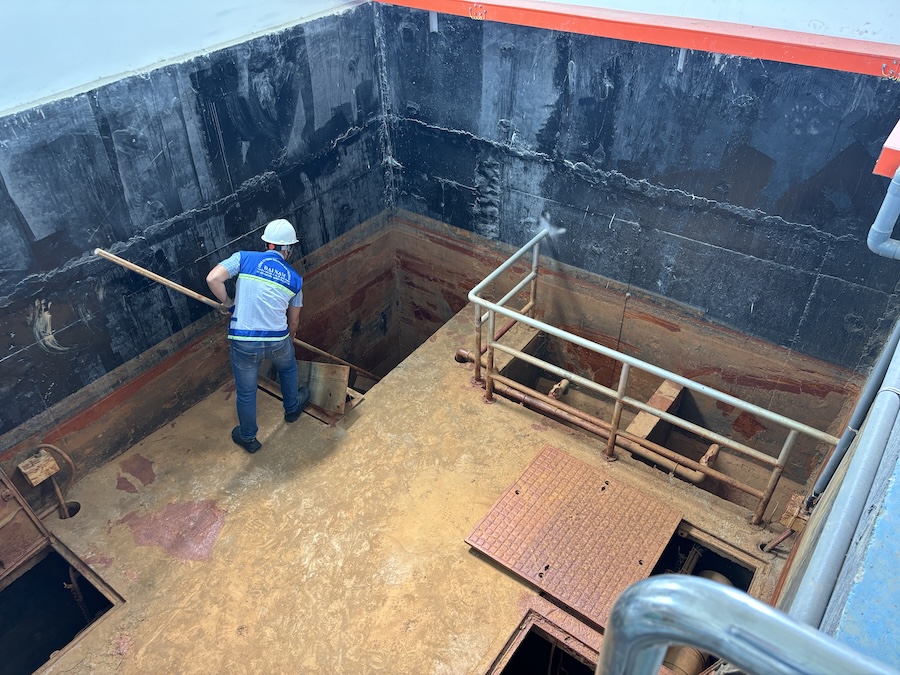
The screening tank removes debris larger than 10–20mm.
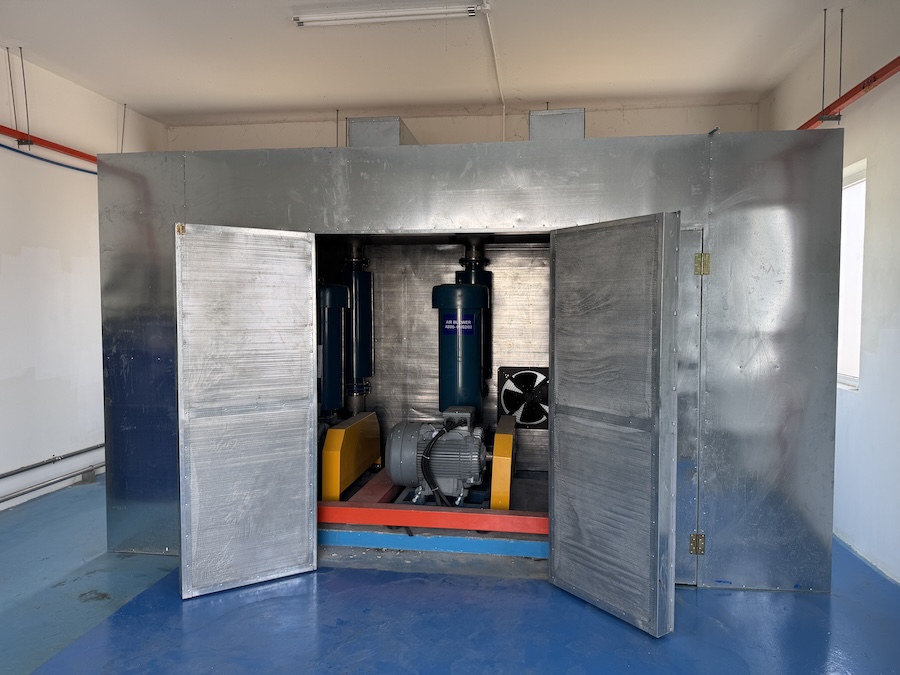
The air blower area is equipped with a soundproof chamber, ensuring output noise meets QCVN 26:2010/BTNMT standards
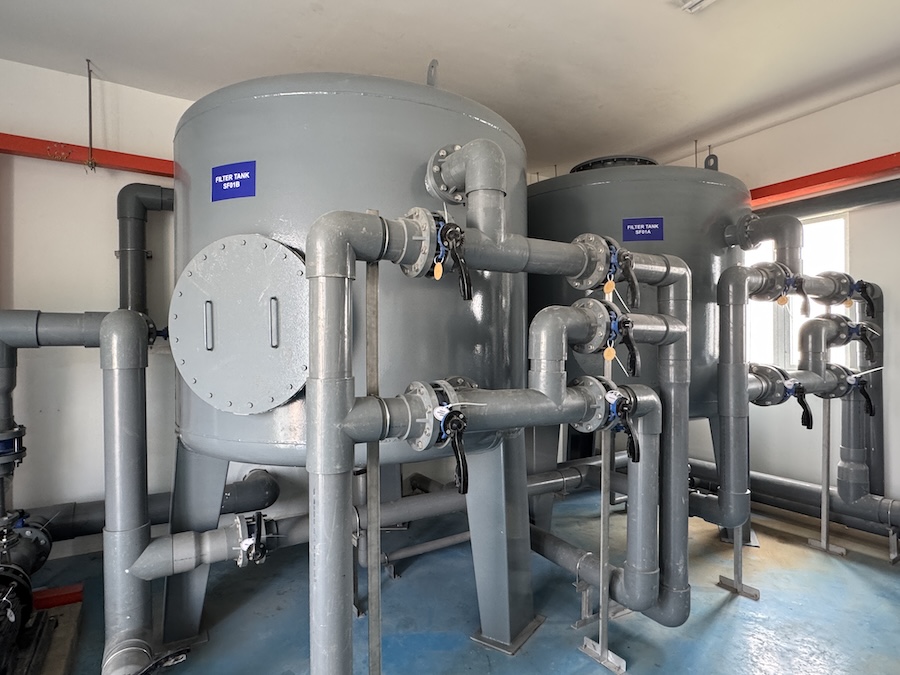
Sand filters retain and remove suspended solids.
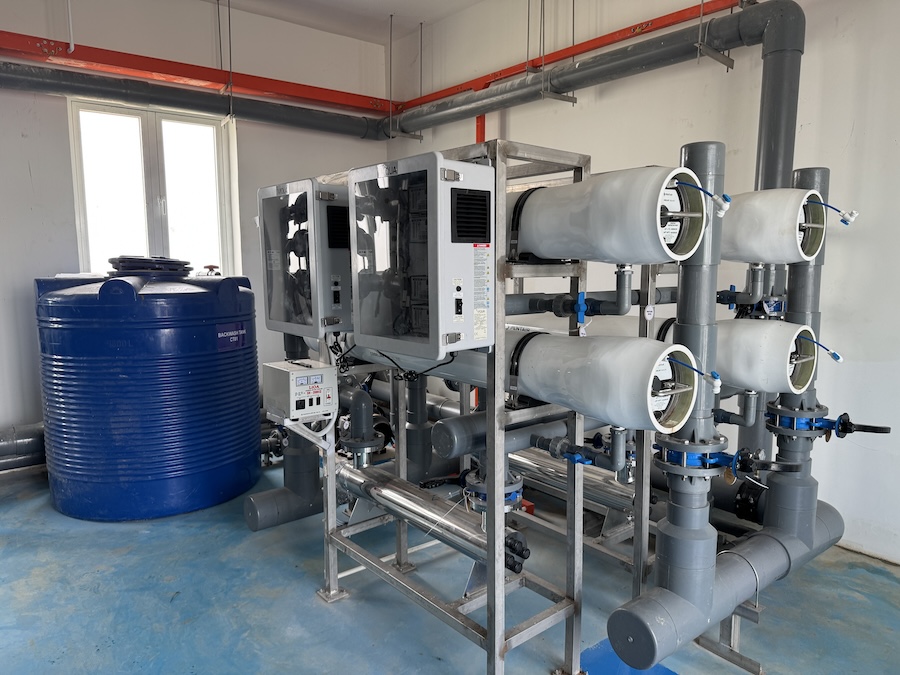
Fine filters eliminate residual contaminants ≥5 microns.
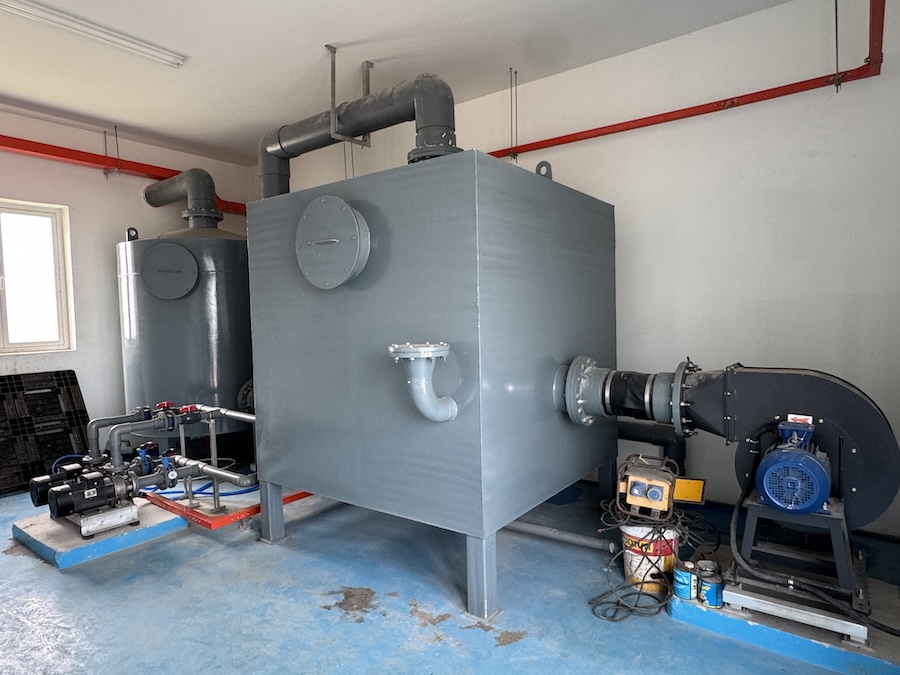
Absorption towers operate within the treatment system.

Chemical storage tanks hold treatment chemicals safely.
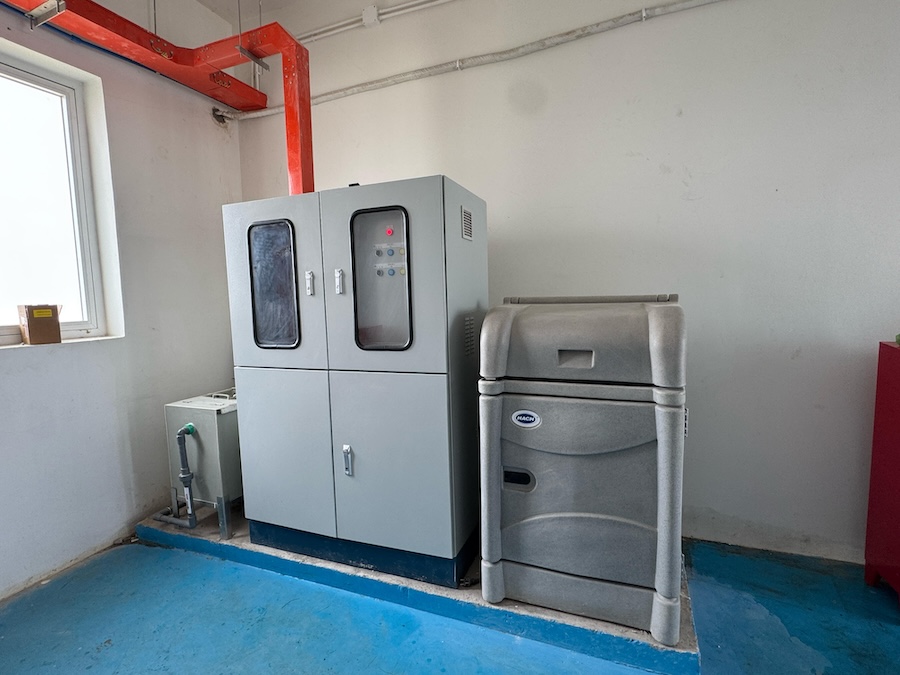
The online monitoring system ensures treated water meets standards
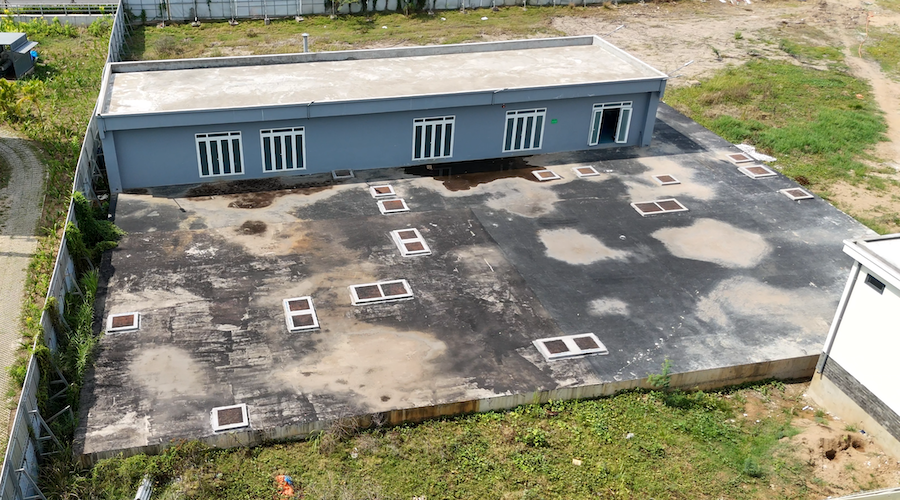
Wastewater Treatment System (Plant No. 2) of Saigon Binh An – implemented by Dai Nam
With a strong focus on sustainability and environmental responsibility from the early stages, the wastewater treatment system at Saigon Binh An (Plant No. 2), implemented by Dai Nam Environmental Solutions, stands as a testament to long-term, serious investment. The modern, stable, and eco-friendly technology helps protect water resources and lays the foundation for a civilized, clean, and livable urban area in the city of the future







